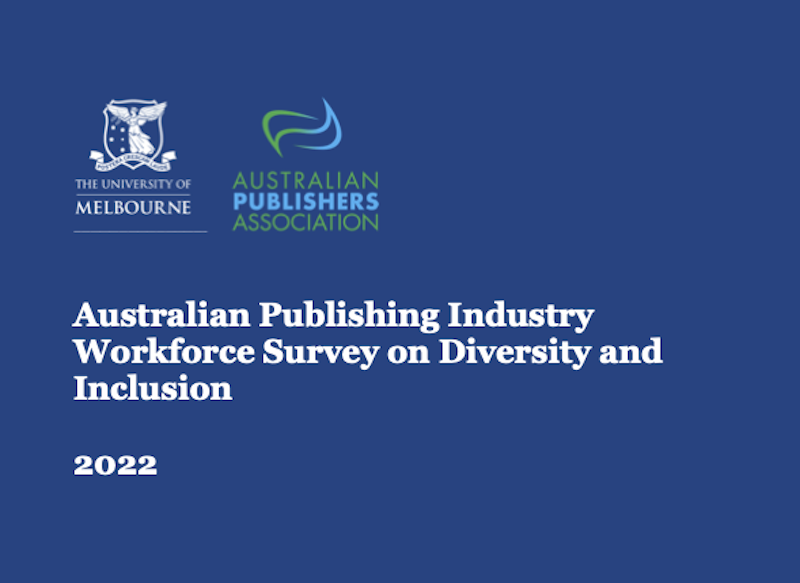
31/08/2022
Results of the inaugural Australian publishing industry diversity & inclusion survey have been released, yielding important insights that will help to push for change in the sector.
The publishing industry in Australia is highly educated, driven by women and has strong LGBTQ+ representation, yet struggles to reflect Australia’s cultural and social diversity, according to the first survey examining diversity in Australian publishing.
The inaugural Australian Publishing Industry Workforce Survey on Diversity and Inclusion was released today, reflecting the views and responses of 989 staff and contractors surveyed in March and April 2022.
The survey sets a baseline to track the demographic makeup of staff in Australian publishing; the high level of engagement with the survey indicates a strong desire for greater industry diversity and inclusion.
Survey findings
More than 85% of respondents hold a degree, and more than half hold at least one postgraduate degree. Survey respondents identify as LGBTQ+ at around twice the proportion in the Australian population. While women make up the majority of the Australian publishing workforce, representation from women and non-binary people declines in more senior positions in the industry.
The industry is largely white, including a high percentage who identify as British; less than ten percent identify with an Asian culture, and less than 11% with a European (non-British) heritage. Fewer than 1% of Australian publishing industry professionals identify as First Nations.
Just over 5% of respondents have a disability, compared to 9% of the Australian workforce, while 24.7% of people reported a disability and/or a long-term health condition. The results surfaced important initial data on wellbeing, with a third of respondents reporting current mental health issues.
“The Australian Publishing Industry Workforce Survey on Diversity and Inclusion is a major step in the pursuit of a publishing industry that welcomes and serves all Australians.
We have a highly able and committed workforce, but our workforce doesn’t always represent the breadth of our culture. This plays into what and how we publish and the extent to which we reach, or don’t reach, all potential readers.
This survey’s hard data tells us we have a great deal of work ahead and provides a solid base from which we can lead change as an association, as publishing houses, and as individuals.”
– James Kellow, President - Australian Publishers Association
Summary of results
- 84% of the survey respondents were women and 2% are non-binary or other.
- Fewer than 1% of Australian publishing industry professionals identify as First Nations. 10.5% identify with a European culture (other than British), and 8.5% nominate an Asian cultural identity.
- 21% of respondents identify as LGBTQ+ compared to estimates of 11% in the Australian population.
- 35.4% of respondents were experiencing mental health conditions at the time of responding to the survey, compared with 25% of respondents to a similar survey of the UK publishing industry in 2021.
- 24.7% of publishing professionals report having a long-term health condition or disability including a physical or mental health condition. 5.2% of respondents have a disability.
- 24.8% of respondents were located in places other than Sydney or Melbourne.
- 33.6% of respondents come from backgrounds that could be described as lower middle or working class. 48% of respondents attended private schools, compared to around 30% in the Australian population.
- More than 85% of respondents hold a degree, and more than half hold at least one postgraduate degree. This compares to 24% of the Australian population holding an undergraduate degree.
The survey authors are Susannah Bowen and Beth Driscoll from the University of Melbourne, with the survey co-sponsored by Australian Publishers Association and University of Melbourne. Beth Driscoll said of the research:
“The high rate of participation in the survey shows a strong desire within the Australian publishing industry for more diverse and inclusive workplaces, and the data from the survey gives valuable information about the current makeup of the industry and where change can happen.”
Next steps
This report and the publication of the data builds on work done over the last 18 months, to provide the momentum for industry-wide change. Diversity & inclusion policy and programs have been designated a strategic priority of the APA, and will be monitored regularly by the Board.
The APA has convened a Diversity & Inclusion Working Group, chaired by Astrid Browne of Hardie Grant Explore. The Group will develop an industry action plan, with specific recommendations for change and improvement.
“The report provides the Working Group with a basis for developing a diversity and inclusion plan for the APA and the industry. The data makes clear that several of the issues are common around the world, but now we have the detail of the situation in Australia, we can measure progress on specific challenges our industry faces,"
– Astrid Browne
The Working Group is encouraging input from publishing staff across the industry, and is establishing a reference group to provide further opportunities to share solutions and ideas. Details on joining are available here.
Further information